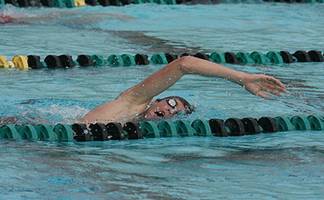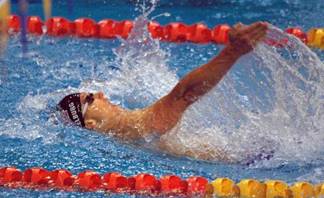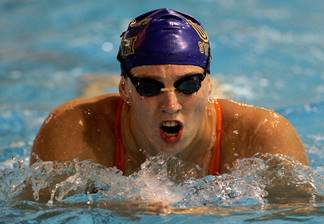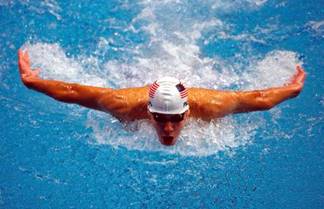Swimming is one of the best forms of exercising as well as relaxing. Read about the techniques involved in the various swimming strokes.
Swimming is a form of exercise that burns a lot of calories, increases your cardiovascular fitness levels, improves your muscular endurance and strength, does not impact the joints due to the water supporting your weight, refreshes and cools you in hot weather, and which can be done safely even in old age.
There is historical evidence of human beings swimming since millennia. For instance, there are cave drawings dating from the Stone Age, depicting people swimming. Swimming is also mentioned in the Bible as well as in the Greek epics, the Iliad and the Odyssey, which date back 1500-2000 years. Four swimmers performing the crawl are also shown in ancient clay seals of Egypt, dating from 4000 BC.
In fact, humans are born with the inherent ability to swim. It has been found that when newborn babies are put in water, they instinctively hold their breath and move their limbs. This is the reason some families are going in for providing swimming training for their babies. But, it is not advisable to try out this inherent swimming reflex in babies at home for self-evident reasons of safety.
However, as far as older children or adults are concerned, swimming is a great way to exercise, to spend leisurely time, and also to pursue as a competitive sport. Whatever may be the reason for taking up swimming, it is important to learn the techniques involved in the various swimming strokes in order to be able to perform it well.
There are four basic swimming stokes: the crawl, also known as freestyle; the backstroke; the breaststroke; and the butterfly. Of these, the butterfly and the breaststroke are harder to learn compared to the crawl and backstroke.
Swimming Stroke # 1 - The Crawl, or Freestyle

Amongst all the swimming strokes, the crawl is the most popular, and beginners find it the easiest to learn. The technique involved in this swimming stroke is pretty simple. You float on your belly in the water, and propel yourself by rotating your arms in a windmill motion, and kick your legs in a fluttering motion. The hardest part of this swimming technique is the coordination of the breathing while performing the strokes, since the face remains in the water almost all the time.
The Arm Strokes
The Leg Movements
How to Breathe
Swimming Stroke # 2 - The Backstroke

The backstroke is akin to the crawl, except that you float on your back in the water. The arms are moved in a similar alternating windmill motion, and the legs a kicked in a similarly fluttering motion. The two basic techniques of a correct backstroke are: One, that the arms are moved with equal force, or else you will find yourself swimming off towards one side; Two, that the body should be rolled from one side to the other, so that the arms extend to their utmost reach, to propel you by catching enough water.
The Arm Strokes
The Leg Movements
How to Breathe
Swimming Stroke # 3 - The Breaststroke

Intricate timing is involved in the breaststroke. As a matter of fact, missing even a single stroke can disqualify you in a swimming competition. This swimming technique involves a pattern wherein the body bobs upwards and downwards as you propel yourself forward in the water. The breaststroke is a difficult swimming technique, and should not be chosen if you are just beginning to learn swimming. Basically, this swimming stroke involves pulling your arms through the water, as you bob up and breathe, and then kicking with your legs as you bob down and glide forward. The arm pulling and the leg kicking are done alternatively.
The Arm Strokes
The Leg Movements
How to Breathe
Swimming Stroke # 4 - The Butterfly Stroke

Similar to the breaststroke, the butterfly is also a difficult swimming technique, and not advocated for beginning learners, since it involves a fair amount of strength as well as precise timing. While performing this stroke, the legs should be moved together akin to the movements of a dolphin’s tail, the arms should also be moved together, pushing the water downwards and then backwards, while the torso moves forward in an undulating manner.
The Arm Strokes
The Leg Movements
How to Breathe
Source: http://www.dpcdsb.org/NR/rdonlyres/85428E7C-2A16-4F06-B503-AD2BAA5E1CAA/40502/SwimmingHandout.doc
Web site to visit: http://www.dpcdsb.org
Author of the text: not indicated on the source document of the above text
If you are the author of the text above and you not agree to share your knowledge for teaching, research, scholarship (for fair use as indicated in the United States copyrigh low) please send us an e-mail and we will remove your text quickly. Fair use is a limitation and exception to the exclusive right granted by copyright law to the author of a creative work. In United States copyright law, fair use is a doctrine that permits limited use of copyrighted material without acquiring permission from the rights holders. Examples of fair use include commentary, search engines, criticism, news reporting, research, teaching, library archiving and scholarship. It provides for the legal, unlicensed citation or incorporation of copyrighted material in another author's work under a four-factor balancing test. (source: http://en.wikipedia.org/wiki/Fair_use)
The information of medicine and health contained in the site are of a general nature and purpose which is purely informative and for this reason may not replace in any case, the council of a doctor or a qualified entity legally to the profession.
The following texts are the property of their respective authors and we thank them for giving us the opportunity to share for free to students, teachers and users of the Web their texts will used only for illustrative educational and scientific purposes only.
All the information in our site are given for nonprofit educational purposes
The information of medicine and health contained in the site are of a general nature and purpose which is purely informative and for this reason may not replace in any case, the council of a doctor or a qualified entity legally to the profession.
www.riassuntini.com